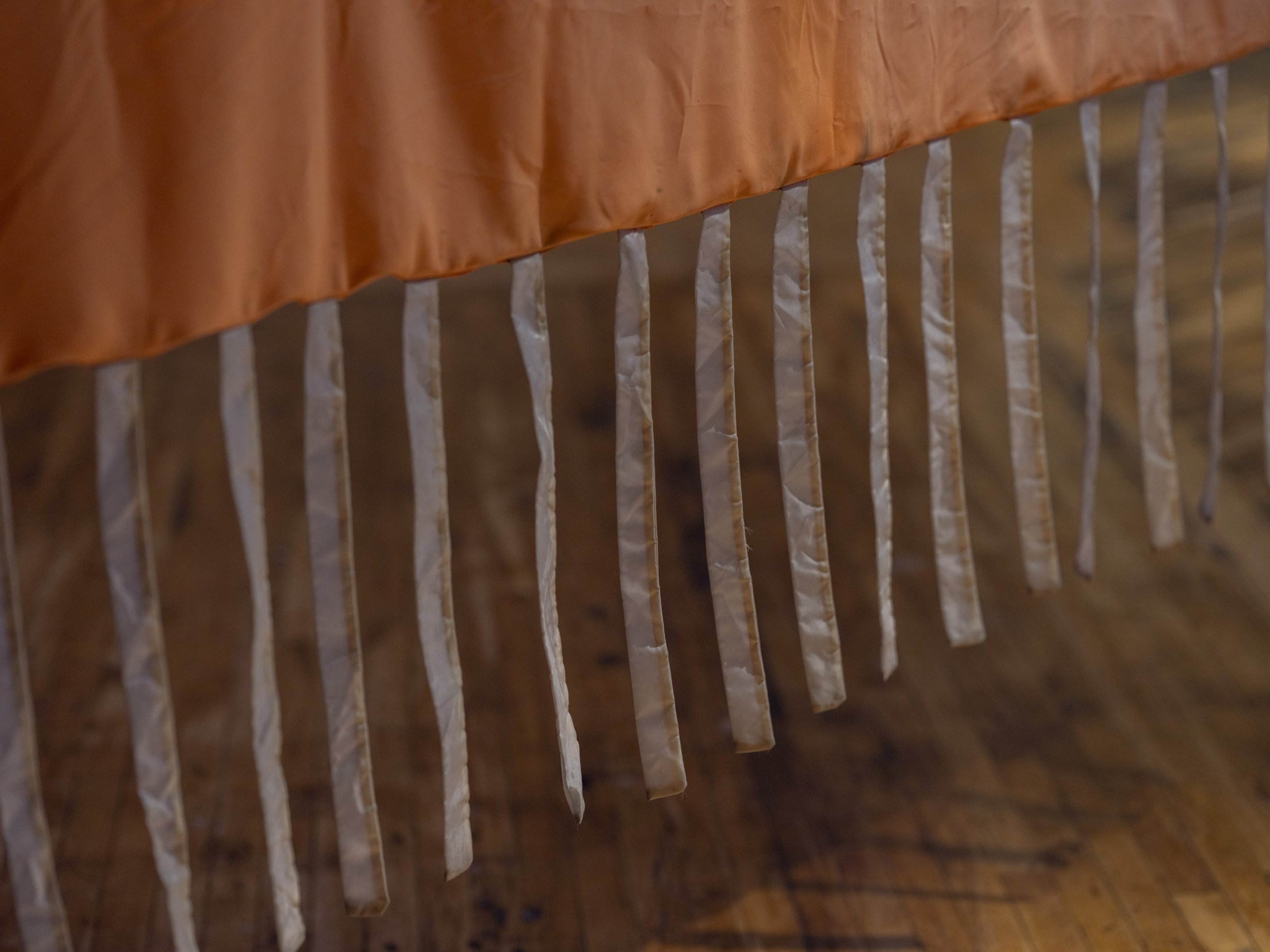
STTLMNT IS NOT HERE
STTLMNT IS NOT HERE: TORONTO
STTLMNT IS NOT HERE asserts an Indigenous artist strategy utilizing occupation (digital and physical) to disseminate post-colonial artworks and create our own living archive.
STTLMNT IS NOT HERE featured artwork, action and engagement by Raven Chacon with Candice Hopkins, Dayna Danger, Tania Willard, and Cannupa Hanska Luger, carried out across Turtle Island and culminating in an exhibition at Trinity Square Video, Toronto, ON, Canada, October 8, 2021 – November 13, 2021.
STTLMNT IS NOT HERE was produced in collaboration with STTLMNT, Trinity Square Video and imagineNATIVE; with curatorial support concept artist Cannupa Hanska Luger and STTLMNT Production manager Ginger Dunnill .
STTLMNT IS NOT HERE installation at Trinity Square Video, Toronto, ON, CA. Image credit: Darren Rigo 2021
DISPATCH
Raven Chacon and Candice Hopkins, 2020
Dispatch is either a transcription of events around the 2016 DAPL encroachment at Standing Rock, a prompt for an ecological oral future, or at the very least, a critique of the privilege of meditative Deep Listening. This score can be realized as a performance or as a series of imagined events. It can also be enacted in the real world. The players, the prompts, and the schematics are derived from an analysis of the surface dynamics and organization of the Water Protectors in defense of Standing Rock during the #noDAPL movement, not glossing over the miscommunication, profiteering, and injustices. In an increasingly fractured society, new paths and new formations are needed to refocus our attention in an attempt to find truth. Participating in this score may produce sonic or visual artifacts, these are as important as the actions.
The Winds are Changing
Tania Willard, 2021
What if we had been able to tell the wind not to blow?
What if the water refused to carry you?
These are stories just as you carry stories; stories across water, stories carried by wind, but these stories grew here. Just like invasive species some stories grew stronger for a while and displaced the stories grown from my ancestor’s bones. But these stories on wind and water curve and sway escaping any plans we thought we may have had. And today we are both here and I am both of you.
I went canoeing, with my family, we carry with us a mixture of these wind and water stories, some from here some from afar and some that have grown here alongside those whose roots extend to the marrow of ancestor times. We canoed a few days after the full moon on the lake, to the mouth of the creek and watched the red salmon stories spawn new future stories in the cold creek water.
Next we climbed that hill, its golden curves set against the cyan blue sky. The wind was strong, we claimed that story, that day, claimed our heritage, re-claimed our land together. But these claims are calm, these claims are about belonging not taking, these claims are in our hearts and our future generations.
After this we went to the lookout and the wind was light and there was no water just this abandoned rez car. Broken windshield, garbage strewn about on this viewpoint over the town. This is a moment too, where the calm is broken by our thrashing. Just like the salmon that thrashes on the line, the salmon that thrashes to survive, we are all thrashing now. Broken windows, struggling towards a new future, a future we claim, carried on water and winds.
The winds are changing.
Learn more at www.windpoetry.ca
ARTIST BIOGRAPHIES
Raven Chacon is a composer, performer, installation artist, and educator from Fort Defiance, Navajo Nation, whose internationally renowned work ranges from chamber music to experimental noise and large-scale installations.
Candice Hopkins is a curator, writer, and researcher interested in history, art, and Indigeneity, and their intersections. Originally from Whitehorse, Yukon Territory, Hopkins is a citizen of Carcross/Tagish First Nation.
Through monumental installations and social collaboration, Cannupa Hanska Luger (Mandan/Hidatsa/Arikara/Lakota) interweaves performance and political action to communicate stories about twenty-first century Indigeneity, producing large-scale projects globally.
Tania Willard, Secwépemc Nation and settler heritage, is an artist and curator. Their work is invested in intersectional ecological concerns and land-based art practices centred in Indigenous territory, community, and knowledge.
Dayna Danger is a Tio’tia:ke, Two-Spirit, Métis, and Saulteaux/Anishinaabe visual artist, activist, and drummer. They are a visual artist who claims space with their human-scale work to challenge perceptions of power, representation, and sexuality.
Watȟéča
Cannupa Hanska Luger, 2021
There is a valuable lesson in the nature of the scavenger.
They thrive by destroying death. Immune to the diseases of rotting flesh.
A final dance for the bodies of the living is to be torn apart completely.
Scavengers transform an end into a beginning, celebrating life after death.
A pivotal component to rejuvenate life’s cycles.
Sheltering the living from the intricacies of deaths annihilation.
Nothing shall be wasted by the scavengers because to them nothing is waste.
Kandace and Danger's Mask, Kinship Masks series, 2019















